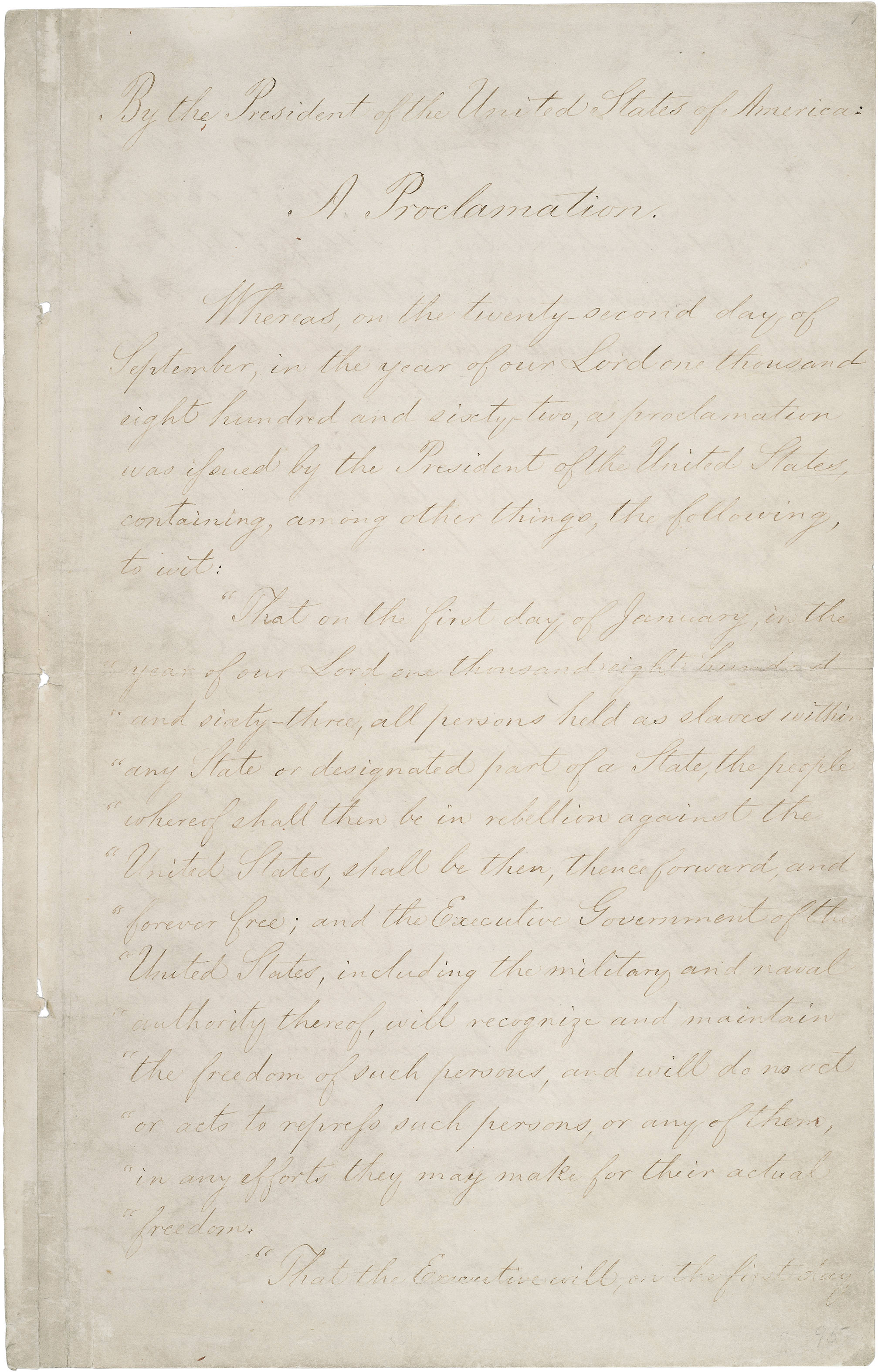The emancipation proclamation was essentially a declaration that freed the slaves. It was delivered by Abraham Lincoln in January of 1863, and stated that all slaves were now freed and that the government would do everything in its power to maintain the freedom of ex-slaves. While this was the main focus of the proclamation, Lincoln also touched upon issues considering the state of the union and how the newly freed slaves should conduct themselves. His views on these centered around his aversion to violence. Regarding the states in rebellion he stated that they would no longer be considered in rebellion and against the union should they peacefully send representatives to congress in the midterm elections. On the topic of how freed slaves should conduct themselves, Lincoln also felt that they should strive to avoid violence. He stated that they should remain non-violent until it was needed for self defense, and that they should try to rise above any threats. This proclamation greatly changed the nation, and was a shock to many Southerners.
emancipation proclamation:

Moses leading slaves out of Egypt in the bible:

emancipation proclamation:

Moses leading slaves out of Egypt in the bible:

Comments
Post a Comment